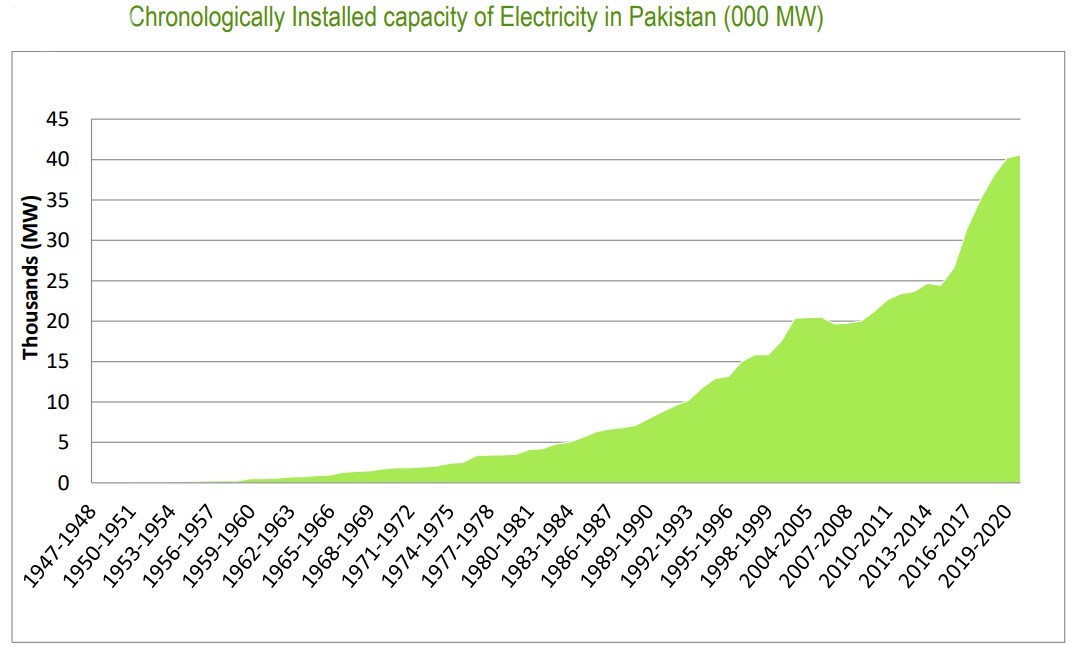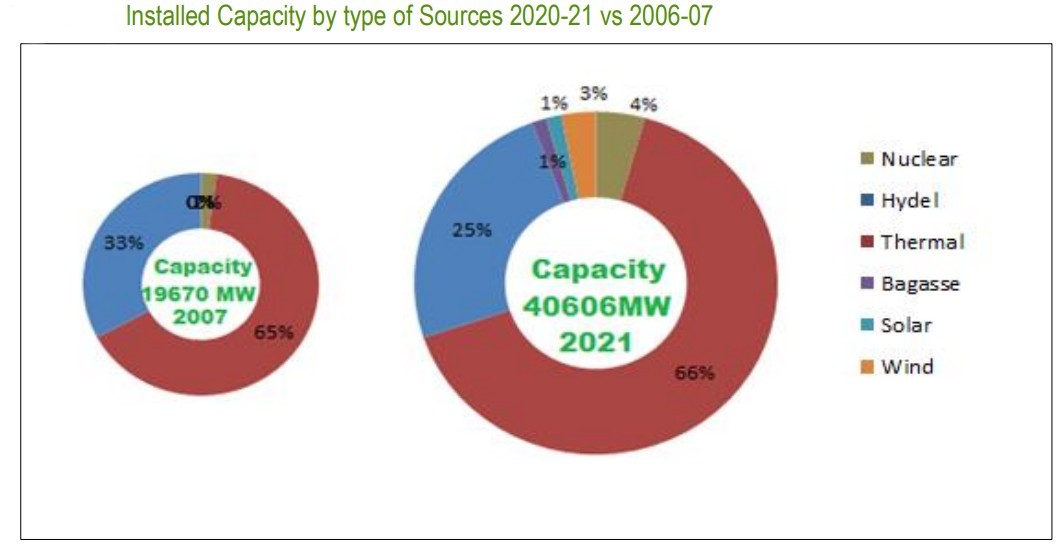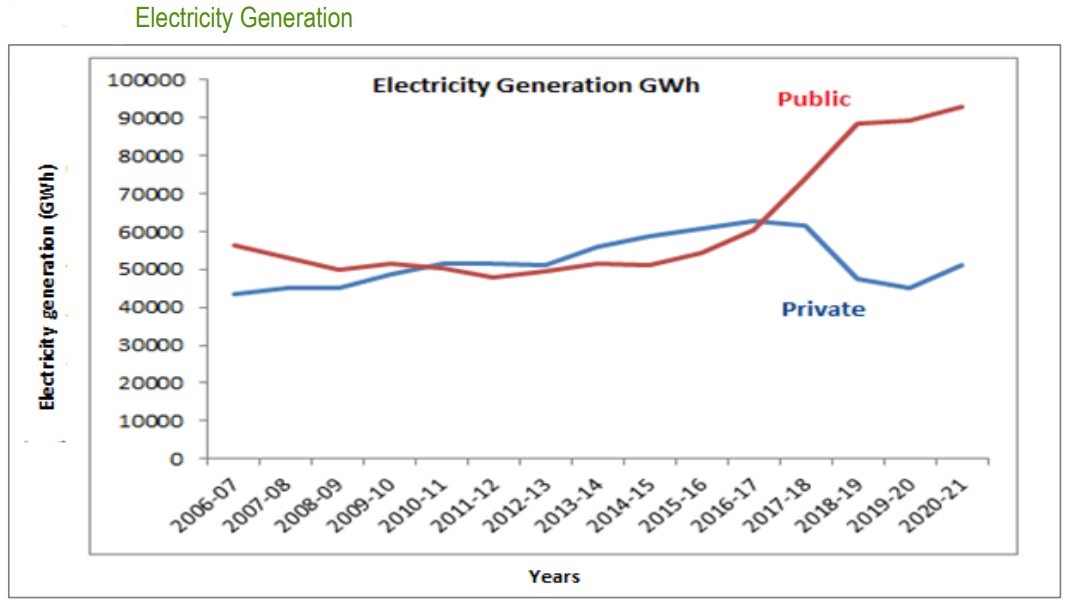INP-WealthPk
By Irfan Ahmed
Pakistan’s total electricity generation capacity increased to 40,606MW in 2020-21 from 19,670MW in 2007, posting a 106% rise, reports WealthPK.
The Punjab province had the maximum installed capacity of 17,257MW. Sindh came second with 11,345MW followed by Khyber Pakhtunkhwa 5,951MW, Balochistan 3,722MW and Azad Jammu and Kashmir 2,331MW, according to Pakistan Bureau of Statistics.
Total electricity generation for the year 2020-21 was recorded at 143,847 gigawatt hours (GWh). Punjab produced maximum generation of 59,609GWh followed by Sindh with 38,241GWh.

According to the PBS report, the Gross Value Added (GVA) of electricity generation for 2020-21 stood at Rs577,759 million. This shows a 573% increase during the 14-year period under review as GVA for the year 2006-07 was recorded at Rs85,896 million.
By the end of seventies, the share of thermal power was 61.33% whereas that of hydel was 38.67%. By 2008, the share of thermal, hydel and nuclear in the overall power generation stood at 65%, 33% and 2%, respectively, as a nuclear power plant was also set up in the early eighties.
According to the report, at present, the share of thermal power is 65.5%, hydel 24.4% and nuclear 4.4%. The alternative power plants set up over the years contribute 5.7% to the overall energy mix, including wind (3%), bagasse (1.3%) and solar (1.4%).
Dr Naeemuz Zafar, the PBS’s Chief Statistician, while commenting on the report, thanked Wapda, Pakistan Atomic Energy Commission, Central Power Purchasing Agency, Independent Power Producers and all other stakeholders for their valuable support in providing data for compilation of the document.
“Efforts have been made to make this report comprehensive, informative and useful for administrators, researchers, policymakers, national accounts and other stakeholders,” he said.
He added that efforts had been made to compile this report as per the requirements of policymakers, planners, researchers and other data users. “It is hoped that the data users will find it very useful in tracing their objectives.”
Electricity is fundamental for socioeconomic development of a country. There has been a constantly increasing demand for electricity and users are always concerned about the sustainability of current production and consumption patterns.
The PBS report further said that quality statistics on electricity generated and produced for consumption was therefore of paramount importance.
“The report establishes an effort to quench the thirst of the data users and sheds light on various important indicators of the sector. It accumulates all information on public and private establishments.”
The report said that Wapda is still a big player of this market. However, electricity generated by private sector from thermal and alternative energy sources has eroded its monopoly over time.
The private sector entered the Pakistan’s electricity market in 1985.
Highlighting some salient features, including the installed capacity, the report said that the overall installed capacity for 2020-21 stood at 40,606MW, which showed a 0.98% growth over 40,211MW in 2019-20.
The installed capacity by type of source has also been computed, where the maximum installed capacity is thermal with a share of 66% for the year 2020-21. Other sources, including hydel, nuclear, wind, bagasse and solar accounted for 25%, 4%, 3%, 1% and 1%, respectively, according to the report.

Electricity sector in Pakistan is continuously evolving due to ever-increasing population and economic growth. Pakistan has not yet fully tapped the potential available in this sector due to resources and skills constraints.
The government has, however, taken a number of steps to bridge the gap between supply and demand of electricity, declaring the current decade as decade of dams, and also setting up solar parks.
The share of the public sector in overall electricity generation was 69% in 2007, which has been reduced to 63% in 2021.
Similarly, share of private sector in total electricity capacity increased from 31% to 37% during the same period.

The government has to pay subsidy to ex-Wapda distribution companies and the Karachi-based K-Electric due to high fuel costs for controlling prices and to reduce unit price for the end users.
The subsidy paid by the government in 2020-21 was 55% more than the subsidy paid in 2019-20.




